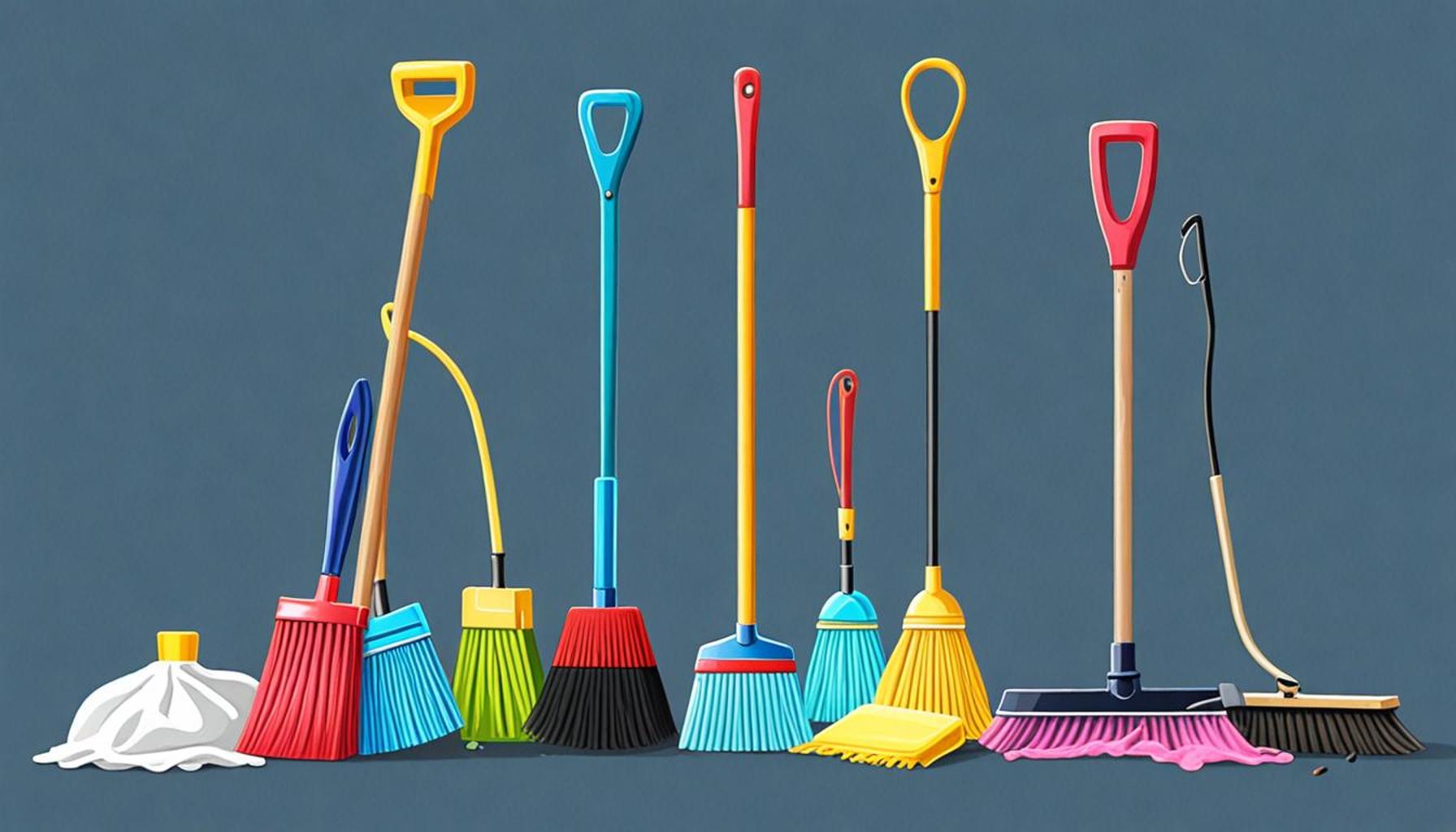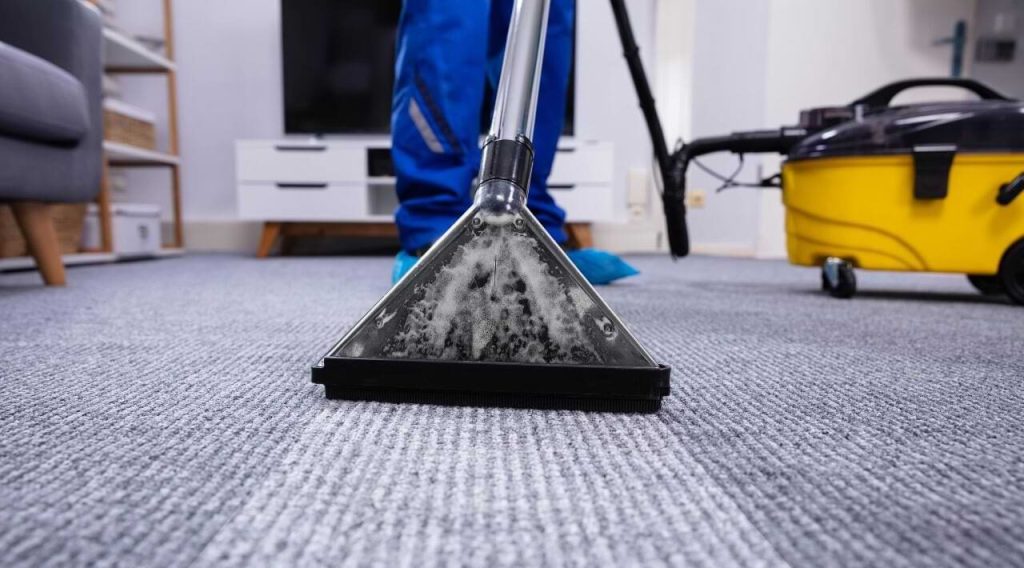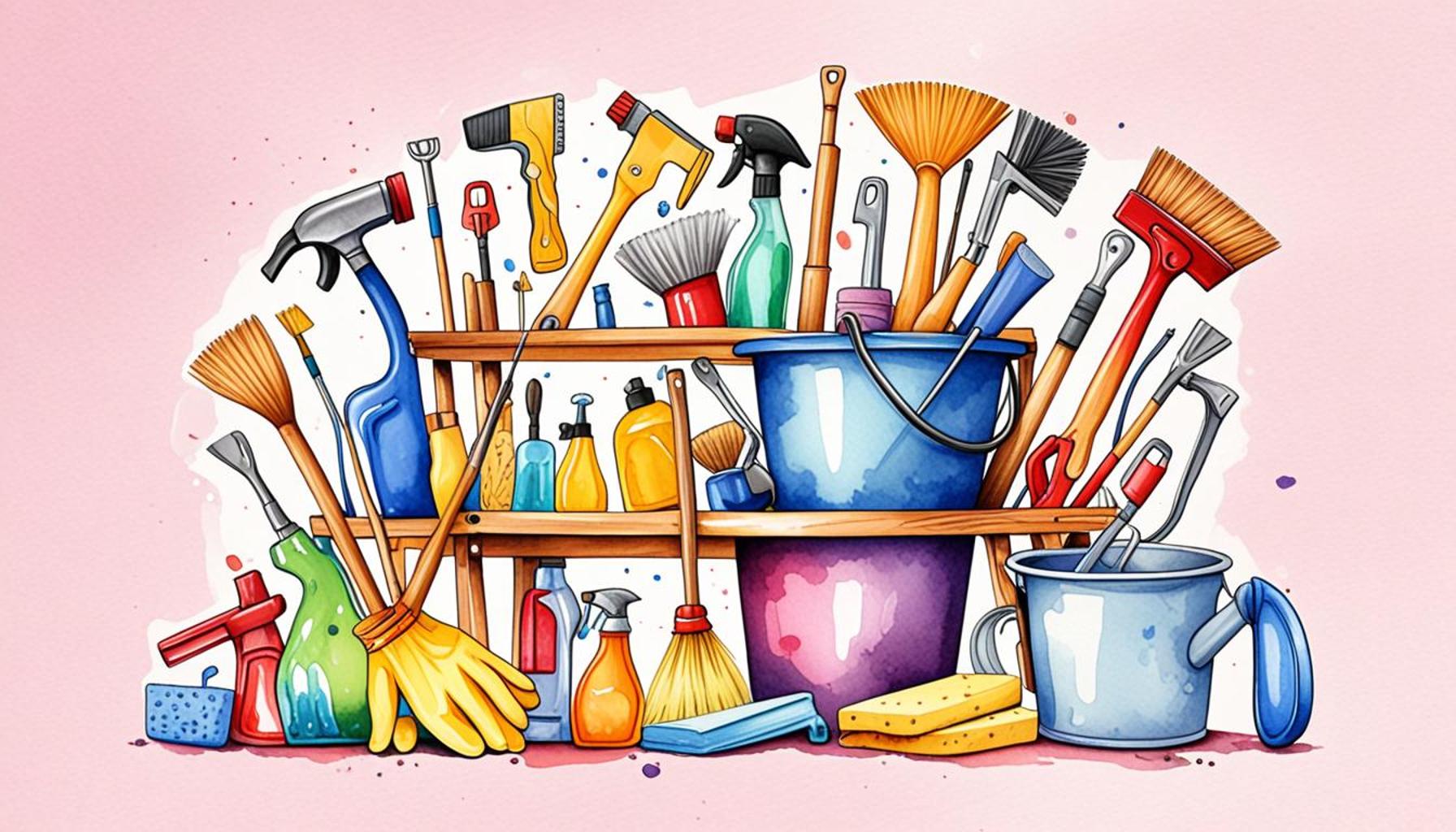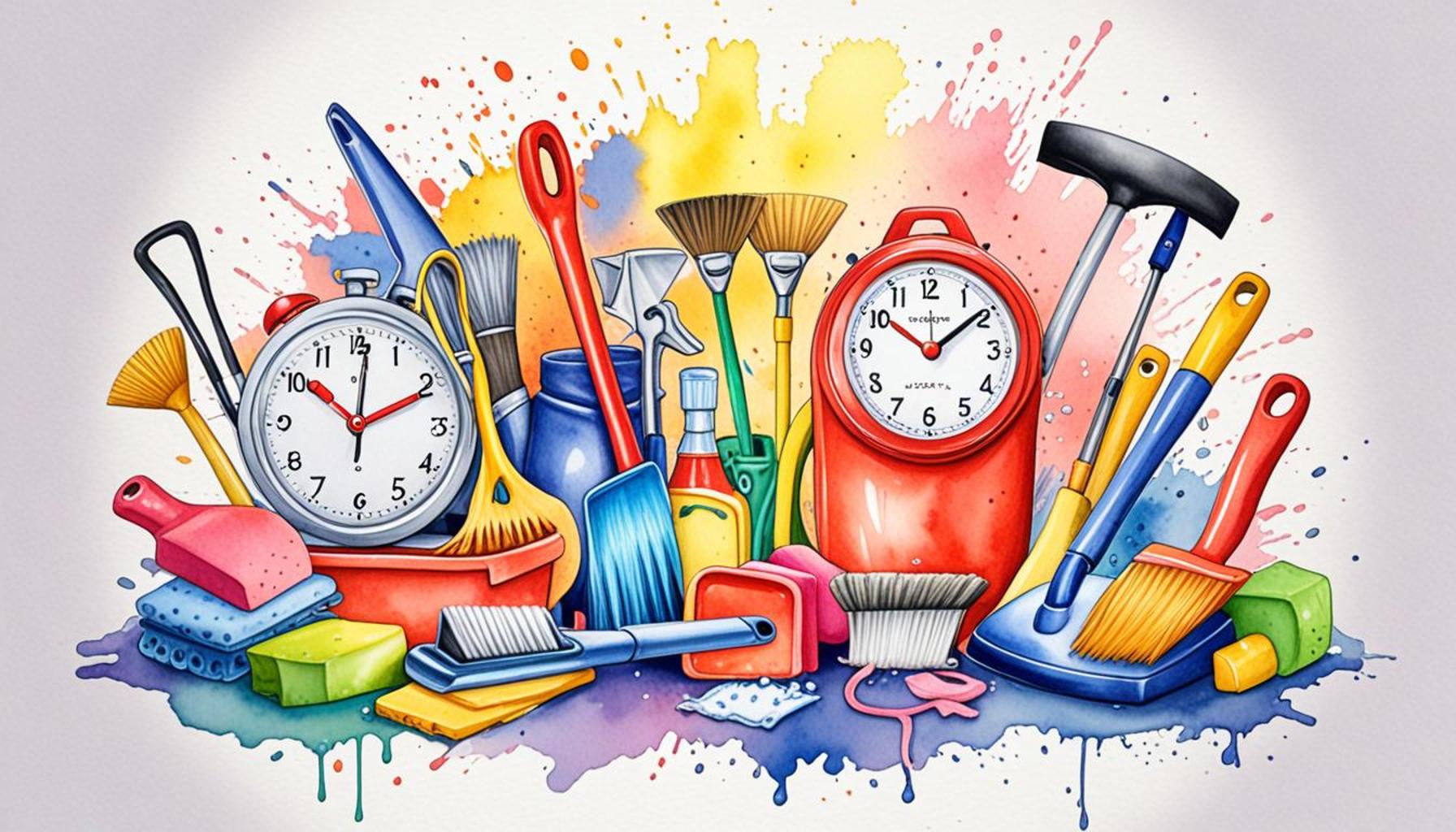Comparative Analysis of Traditional vs. Modern Cleaning Tools: Which is More Effective?

Understanding the Evolution of Cleaning Tools
The evolution of cleaning tools has been a fascinating journey shaped by advancements in technology, shifting lifestyles, and diverse consumer demands. For decades, traditional cleaning tools like brooms and mops have remained household essentials, beloved for their reliability and simplicity. However, the rise of modern cleaning devices, including robotic vacuums, steam cleaners, and UV sanitizers, has sparked a debate: do these innovations truly outshine the time-honored methods of cleaning? As we examine this topic, it is essential to explore a few key factors that can aid in reaching a conclusion.
Effectiveness: Which Tools Provide a Deeper Clean?
When it comes to effectiveness, traditional tools often excel in certain areas. For instance, a good old-fashioned broom can sweep away dust and debris from corners and tight spaces with precision. Mops, particularly with the use of suitable cleaning solutions, can tackle sticky or stubborn stains effectively. However, modern innovations such as robotic vacuums are equipped with advanced sensors that allow them to detect dirt and navigate around furniture, providing consistent cleaning with minimal human intervention. Additionally, steam cleaners use high-temperature steam to kill bacteria and allergens, thus providing an extra level of sanitization that traditional methods might not offer.
Time Efficiency: The Race Against the Clock
Time is of the essence for many households, particularly in the bustling environment of the United States where busy schedules dominate. Traditional cleaning tools often require significant manual effort and time investment. Sweeping and mopping can be labor-intensive, especially in large spaces. On the other hand, modern tools like robotic vacuums can operate autonomously, allowing users to direct their focus to other tasks while the cleaning is being done. For example, many robotic vacuums can be programmed to clean during off-peak hours, further streamlining the cleaning process.
Cost: Initial Investment vs. Longevity
Cost is a critical consideration for homeowners when judging cleaning tools. Traditional tools are generally low-cost and easily accessible. A simple broom and mop can often be found for under $30, making them budget-friendly. In contrast, modern cleaning devices can come with a higher price tag; robotic vacuums can range from $200 to over $1,000. However, it’s important to analyze the long-term savings. For example, robotic vacuums can reduce the frequency of deep cleaning sessions or hiring professional cleaners, potentially saving money in the long run.
Environmental Impact: Eco-Friendly Considerations
As sustainability becomes increasingly important, many consumers are considering the environmental impacts of their cleaning choices. Traditional cleaning often involves less packaging and fewer synthetic materials, but it may rely on chemical-laden cleaning products. In contrast, modern tools like steam cleaners can clean effectively with just water, reducing chemical usage. Furthermore, some robotic vacuums are designed with energy efficiency in mind, consuming less electricity than one would expect during their operation. Households should carefully consider their choices, weighing the benefits of innovative tools against their environmental footprint.

In summary, this analysis reveals a variety of strengths and weaknesses inherent in traditional and modern cleaning tools. As you consider which tools best suit your household needs, it may lead to reevaluating your current cleaning routines. Ultimately, the objective is to find solutions that not only achieve a cleaner home but also complement your lifestyle and values.
DISCOVER MORE: Click here to learn about mindful cleaning
Effectiveness: Which Tools Provide a Deeper Clean?
In the quest for cleanliness, understanding the effectiveness of traditional versus modern cleaning tools is paramount. Traditional cleaning implements such as brooms, mops, and cloths have dominated households for generations. Their simplicity and intuitive use often make them favorites among many homeowners. For example, a sturdy broom can reach into corners and narrow spaces where dust tends to gather, offering an unparalleled tactile connection that modern tools sometimes lack. Likewise, the classic mop, particularly when paired with effective cleaning solutions, can tackle stubborn stains that require elbow grease.
However, as cleaning technology continues to advance, modern cleaning tools bring a new dimension to the conversation. Robotic vacuums, for instance, employ sophisticated sensors and artificial intelligence to navigate complex living spaces, ensuring thorough cleaning in hard-to-reach spots. These devices can adapt to various flooring types, automatically increasing suction power on carpeted areas, and thus providing a level of customization that traditional tools cannot match. Furthermore, steam cleaners are making waves as effective sanitization solutions. Utilizing high-temperature steam, they eliminate up to 99.9% of bacteria and allergens without the need for chemical additives, making them a popular choice for health-conscious consumers.
Time Efficiency: The Race Against the Clock
In today’s fast-paced world, time efficiency is a critical factor in choosing cleaning tools. With professional commitments, family obligations, and social activities vying for attention, many households are seeking ways to streamline their cleaning routines. Traditional methods typically require a significant time commitment—sweeping, mopping, and dusting can be labor-intensive, especially in larger homes. For instance, a standard vacuuming session with a traditional upright vacuum might take anywhere from 30 minutes to an hour, depending on the size of the space and the conditions of the floors.
Conversely, modern cleaning devices, particularly robotic vacuums, revolutionize convenience. These gadgets can be set to clean autonomously at scheduled times, freeing users to focus on other tasks or even relax while their floors are being cleaned. Many models come equipped with features such as smartphone apps, allowing users to start or stop cleaning sessions remotely or to customize cleaning schedules. On average, robotic vacuums can complete their tasks in less time than traditional vacuums, further appealing to busy families.
Cost: Initial Investment vs. Longevity
When assessing the effectiveness of cleaning tools, analyzing cost is essential as it plays a vital role in decision-making. Traditional cleaning tools are usually cost-effective. A basic broom and mop can be acquired for under $30, making them accessible to most households. They have low maintenance costs and, with proper care, can last for several years. However, the investment in traditional tools may necessitate periodic purchases of cleaning solutions or replacement parts, which can add up over time.
In contrast, modern cleaning devices often come with a higher upfront cost. For example, a reliable robotic vacuum can range from $200 to over $1,000, depending on features and brand. Despite the initial sticker shock, it is important to consider the long-term benefits. Robotic vacuums can reduce the frequency of deep cleaning needs and may eliminate the necessity of hiring professional services, offering potential savings over time. Households must weigh the immediate investment against the long-term functionality to determine which option aligns with their financial priorities.
As we consider the various aspects of traditional versus modern cleaning tools, it becomes clear that each offers distinct advantages and challenges. The decision on which tool is more effective depends on individual needs, preferences, and lifestyles. In the end, consumers are encouraged to evaluate their choices carefully, ensuring that their cleaning solutions complement their expectations for a tidy, healthy home.
As we delve deeper into the comparative analysis of traditional versus modern cleaning tools, it’s essential to consider not just their efficacy but also the diverse contexts in which they are employed. Traditional cleaning tools, such as brooms, mops, and sponges, have been meticulously designed over centuries to address specific cleaning tasks. They typically rely on physical effort and human ingenuity to tackle dirt and grime. For instance, a simple broom can efficiently disperse dust from hard surfaces, while a mop can dampen and lift filth from floors with the repeated action of wrist movement.On the other hand, modern cleaning tools, including vacuums, steam cleaners, and automated robotic cleaners, incorporate advanced technology to enhance their cleaning capabilities. These gadgets often boast features such as suction power, environmental sensor adjustments, and even self-cleaning modes. The integration of technology not only minimizes the physical labor required but also optimizes cleaning time, allowing users to engage in other activities while their cleaning tasks are being efficiently managed.Moreover, it’s worth noting that modern cleaning instruments may come equipped with specialized attachments, enabling them to clean various surfaces—from carpets to tiles—far more effectively than traditional methods. For example, steam cleaners can sanitize surfaces using high temperatures, killing bacteria without the need for harsh chemicals, promoting a healthier home environment. In contrast, traditional cleaners may require chemicals that can pose health risks if not used properly.Financial considerations also play a vital role in this comparison. While traditional tools typically incur lower upfront costs, they may necessitate ongoing purchases, like cleaning solutions and replacements. Comparatively, while modern cleaning gadgets might be more expensive initially, they can lead to savings over time through reduced labor costs and less need for consumable products, making them an appealing option for many households. Ultimately, the question of effectiveness may come down to personal preference, lifestyle, and specific cleaning needs. The blend of tradition and innovation offers a unique dynamic whereby users can choose tools that best fit their unique cleaning requirements. As homeowners consider their cleaning arsenal, weighing the pros and cons of each tool will lead to informed decisions that can not only improve cleaning efficiency but also enhance overall living conditions. The exploration of this topic is vast and layered, promising more intriguing discoveries about the evolution of cleaning technologies.
DON’T MISS OUT: Click here to discover how to get the whole family involved in cleaning
Environmental Impact: Assessing Sustainability
As consumers become increasingly aware of environmental issues, the ecological impact of cleaning tools has gained significant attention. Traditional cleaning methods, often reliant on chemical solutions, can contribute to chemical runoff entering the water supply, posing risks to aquatic ecosystems. For instance, products containing phosphates and bleach can disrupt local wildlife and promote harmful algae blooms, thereby damaging the environment. Additionally, disposable cleaning cloths and single-use products can exacerbate landfill issues when proper waste management practices are not followed.
In stark contrast, many modern cleaning tools are designed with sustainability in mind. For example, several companies have developed reusable, washable cleaning pads for robotic mops and steam cleaners, reducing waste associated with disposable products. Moreover, certain models utilize less water during operation, making them more eco-friendly than traditional mopping techniques. Notable brands have begun incorporating recycled materials into their products, contributing to a circular economy and reducing the demand for virgin resources.
Usability and Ergonomics: Comfort in Action
Another noteworthy factor in the effectiveness of cleaning tools lies in their usability and ergonomic design. Traditional cleaning aids often require significant physical effort, which can lead to fatigue and discomfort, especially for older adults or those with physical limitations. Continuous bending or lifting, common during sweeping and mopping, can result in strain or injury over time.
Modern cleaning tools, however, often feature ergonomic designs that prioritizes user comfort. For example, many vacuum models now come with lightweight designs and swivel steering, allowing users more control and reducing the physical strain associated with maneuvering bulky equipment. Additionally, electric mops and steam cleaners eliminate the need for repetitive scrubbing motions, making the cleaning process less physically demanding. Innovations like handle height adjustments and lightweight materials work together to improve the user experience and make cleaning accessible to a broader audience.
Maintenance and Cleaning: Simplifying Upkeep
Cleaning tools require maintenance to perform at their best, a factor that can greatly influence their effectiveness. Traditional cleaning tools often demand routine upkeep, such as washing mops and cloths or replacing worn-out broom bristles. These tasks can add time and complexity to cleaning routines, especially in busy households. With proper care, traditional tools can last long, but they do require consistent attention.
On the other hand, many modern cleaning devices incorporate self-maintenance features that simplify upkeep. Robotic vacuums, for instance, generally require routine emptying of their dust bins and occasional brushing of the rollers, yet manufacturers have steadily improved designs to minimize human intervention. Some models feature self-emptying capabilities, further reducing manual maintenance. Additionally, with the advancement of technology, many modern devices include alerts to inform users when cleaning cycles finish or when maintenance is due, providing ease of use that traditional tools cannot match.
As we delve deeper into the comparative analysis of traditional versus modern cleaning tools, it becomes increasingly evident that each category possesses its unique benefits and challenges. By examining environmental impacts, usability, and maintenance considerations, consumers can make informed decisions, aligning their cleaning solutions with their values and lifestyles. This thorough consideration signifies a shift towards more intelligent cleaning choices, ultimately shaping a cleaner, healthier home environment.
DISCOVER MORE: Click here to streamline your cleaning supplies
Final Thoughts: Making the Right Choice in Cleaning Tools
In the debate of traditional vs. modern cleaning tools, it’s clear that both have their strengths and weaknesses. Traditional cleaning methods offer simplicity and accessibility, often requiring minimal investment and expertise. However, they may come with environmental concerns and demands for physical effort that can be taxing for some users. Conversely, modern cleaning tools are rapidly evolving to provide solutions that prioritize sustainability, ergonomics, and ease of use. With features designed to mitigate environmental impact and reduce the physical strain of cleaning, they are appealing to a wide range of consumers.
As we observe trends toward increased environmental consciousness and technological advancement, the move towards modern cleaning solutions is likely to continue. Eco-friendly features such as reusable pads and less water usage resonate with consumers seeking sustainability. At the same time, ergonomic designs pique the interest of those who may have previously struggled with traditional methods.
Ultimately, the choice between traditional and modern cleaning tools will depend on individual preferences, cleaning needs, and values. Consumers are encouraged to weigh the effectiveness of both approaches while considering factors such as usability, maintenance, and environmental impact. By doing so, they can make informed decisions that not only promote a cleaner home but also contribute positively to the planet. Embracing innovation while respecting time-tested methods may very well hold the key to a more effective and sustainable cleaning future.


